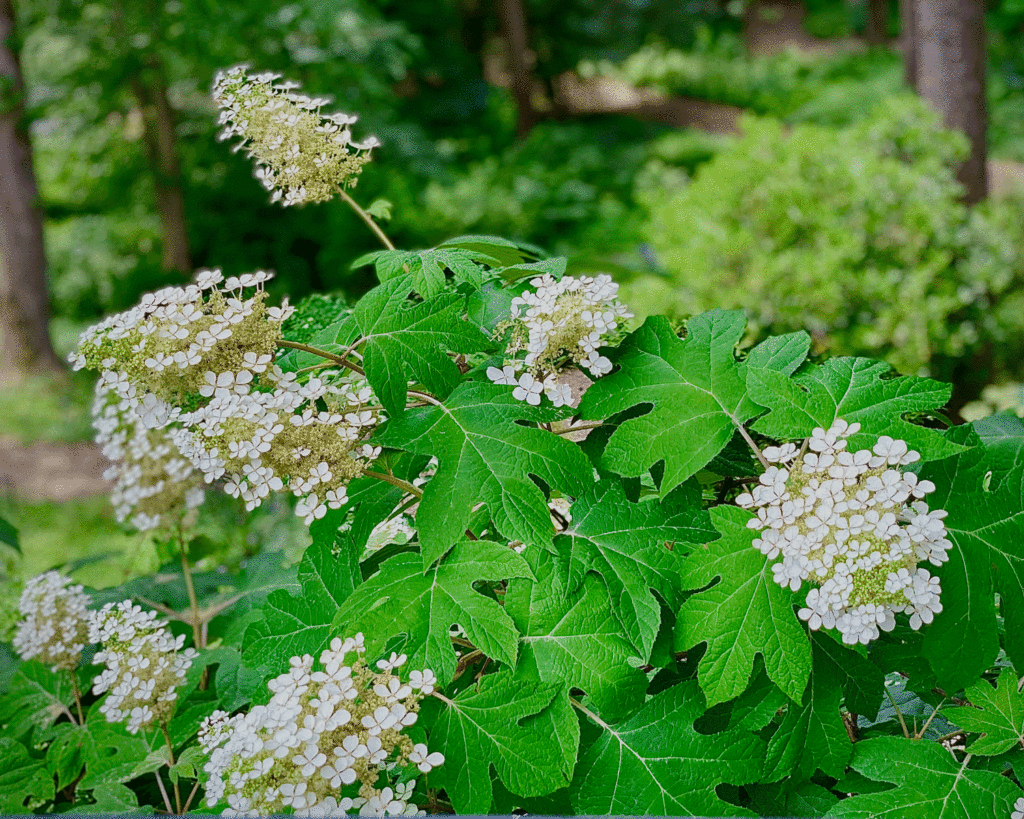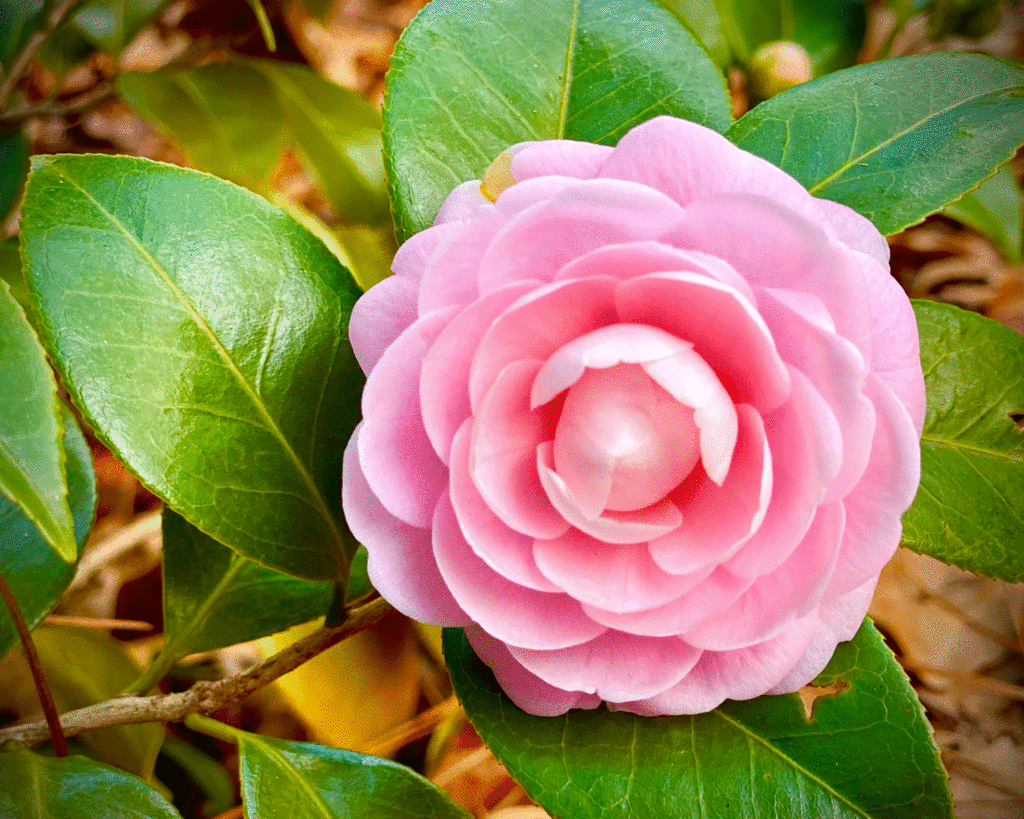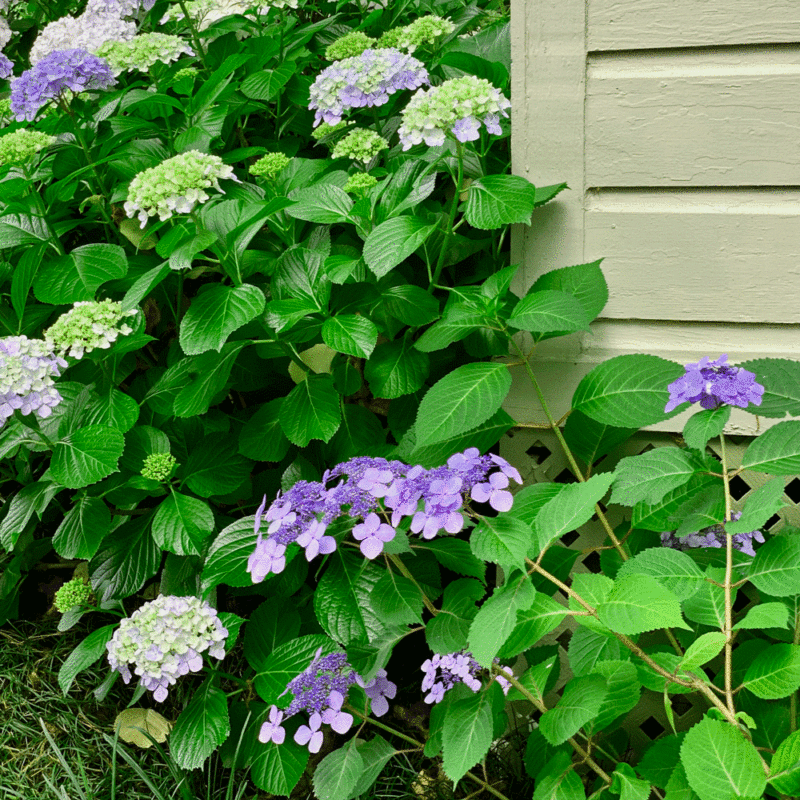Think ahead to next spring and plant shrubs this fall. Autumn’s warm days and cool nights give shrubs (and trees) opportunity to settle into the ground and dedicate energy to establishing roots.
The fall weather in our zone is generally wetter, too, and that gives plants the very best start. If you wait until spring to plant, excessive heat can stress plants and slow their growth.
Fall planting means fewer pest and disease problems, overall. The big plus for this gardener is dealing with fewer pesky insects like mosquitoes while I plant.
Before you buy shrubs to plant, you need to pick your site. When you visit your local garden center, you can feel confident that the nursery plants will grow in our USDA hardiness zone 7b climate. But if you put a shade-loving plant in full sun, or the reverse, your planting project will be be successful.
Know Your Landscape’s Site and Light
Plants tags give you a lot of helpful information, including the amount of light the plant needs to thrive.

On plant tags, “full sun” means the plant needs at least six hours of sunlight a day. Once established, plants rated for full sun can take heat all day long, although many appreciate shady relief from the late afternoon heat in August. Look for shade from trees or structures on the west side of your property to help there.
Full Sun Shrubs
Abelia
Arborvitae
Barberry
Boxwood
Buddleia (butterfly bush)
Crape Myrtle
Cryptomeria
Elaeagnus
Holly
Ligustrum
Rosemary
Serviceberry
Vitex (chaste tree)
Weigela
Part Shade to Full Sun

Oakleaf hydrangea in the garden. Photo by Lucy Mercer/A Cook and Her Books
“Part shade to full sun” means three to six hours of sunlight. Plants that thrive in partial shade need either a slow start to their day, with summer sun reaching them closer to the noon hour, or an early end with a break from hot afternoon sun.
Hydrangea macrophylla is a good example of a part shade shrub. While panicle hydrangeas like “Limelight,” “Quick Fire” and “Pinky Winky” hold up under intense summer sun, big-leafed hydrangea macrophylla wilt when they’ve had too much heat.
Part Shade to Full Sun Shrubs
Anise tree (sometimes called “banana shrub”)
Azalea
Callicarpa (American beautyberry)
Camellia
Cleyera
Distylium
Gardenia
Holly
Hydrangea
Loropetalum
Nandina
Part Sun to Shade

“Part Sun to Shade” plants need less than three hours of sunlight a day. For flowering shrubs, keep in mind that more sun equals more blooms.
Part Sun to Full Shade Shrubs
Hydrangea macrophylla
Oakleaf hydrangea
Mahonia
Pieris
Rhododendron
Yew
Tips for Selecting Shrubs

Before shopping for shrubs, do your research. For inspiration, look at what your neighbors are growing, what’s succeeding and what’s not. Go on garden tours and note what you like and ask the homeowners. Questions like plant identification, how long to get the plants established, and noting any problems will help you as you plan.
In online research, look for reviews and research extension publications.
Tip: In your search engine of choice (Google, Duck Duck Go, etc.) type in your query followed by “site:edu” and you can select from top science-based information from universities across the country.
When shopping at the nursery, look for shrubs with full, healthy growth. Shrubs can be an investment, so take the time to check them out. It’s okay to pull the plant out of the container and check the roots.
Shrubs can stay in a garden center’s inventory for some time, so make sure the plant isn’t container bound. There’s a balance here ~ you want to see roots to show that it hasn’t recently been transplanted to the nursery pot, but you don’t want the roots coming out the bottom, or wrapped around in a root mass.
How to Plant Shrubs

There’s an old school method of planting shrubs that calls for digging a hole twice as wide and as deep as the root ball, followed by amending the soil in the bottom with rich compost and organic matter before settling the shrub in place. The twice as wide part is good, the twice as deep part is outdated.
This practice is akin to digging a $5 hole for a 50-cent plant (apply your own economy of scale here).
Organic matter like compost is still beneficial, but it’s not necessary to add it to the bottom of the hole, because roots grow out, not necessarily down. Also, there’s gardening tough love at play here: all that rich goodness makes for a very spoiled plant. You’ll find that nourishing the plant the way nature does, from the top down, is best. Fertilize shrubs by top dressing with compost and mulch.
- Dig a hole twice as wide and only as deep as the root ball.
- With a garden knife or the side of a trowel, break up the root ball on the shrub and settle the plant into the hole. Position it so that it’s level.
- Fill in with a mixture of compost and garden soil to the top of the root ball.
- Water in well.
- Mulch around the shrub, but don’t pile it around the stem, that just attracts insects. Give it some breathing room.
- Water in the shrub and continue watering until established.
A soaker hose is a great solution for giving shrubs the moisture they need while getting established. Set up a timer on the outside faucet and attach the soaker hose.
Author’s Note
This story originally appeared in my local newspaper’s monthly Master Gardener column.
Read More Garden Stories
Join the Conversation
Let’s talk about gardening and more on Instagram and Facebook. I’d love to hear from you!



Leave a Comment